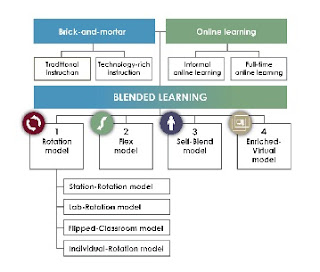Research matrix – Nurulhana Hussain
|
Title
|
|
Aim
|
Research objectives
|
Research questions
|
Methodology to use (How
to collect data?)
|
Instruments for analysis
|
Expected outcome
|
|
1. To design BL approach in teaching
ELP to facilitate the development of
TPACK
|
1.
To
investigate pre service teachers’ entry level of TPACK.
2.
To
investigate pre service teachers’ level of ELP.
3.
To
identify the BL tools to be used to enhance ELP
4.
To review the features of BL in ELP course
which help to facilitate TPACK
|
1.
What is the pre service teachers’ entry level of TPACK?
2.
What is the pre service teachers’ level of ELP?
3.
What are the BL tools to be used to enhance ELP?
4.
What are the features of BL used in the ELP course to facilitate
TPACK?
|
1.Modified TPACK Survey
2. ELP Test / self-assessment check list.
3. Check list of the Use of online tools (Moodle,
Voxopop, Voice Thread, Online forum).
4. Observation
|
2. ELP Test results / checklist by Holt & Van
Duzer (2000) http://www.cal.org/caela/tools/program_development/elltoolkit/Part2-5NeedsAssessment&LearnerSelf-Evaluation.pdf
3. Check list analysis
|
|
|
2. To identify if BL helps to facilitate
the development of TPACK among pre service teachers
|
1.
To
investigate how BL used in ELP course help to facilitate TPACK.
|
1. Does BL
used in ELP course help to facilitate the development of TPACK among pre
service teachers?
If yes,
If no,
|
1. Transcript from online forum
2. Questionnaire
3. Interview
4. Observation
|
|
|
|
2. To identify if BL helps to enhance pre
service teachers' achievement in ELP course
|
1.
To investigate how the BL tools used
help pre service teachers’ achievement in ELP course
|
2. Does BL
help to enhance the achievement of the pre service teachers in ELP course?
If
yes,
If no,
·
What makes it fail?
·
What are the possible variables which interfere with the
results?
·
What are the constraints?
|
Reflective
report
ELP
test
Course
work
Presentation
Interview
|
|
|

